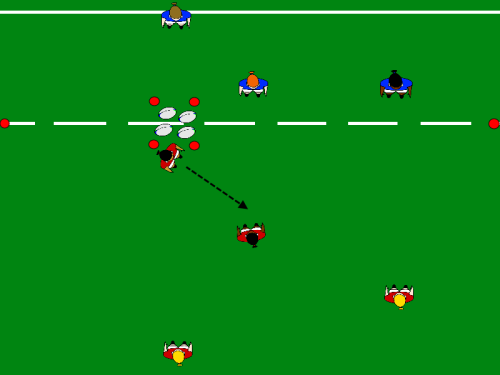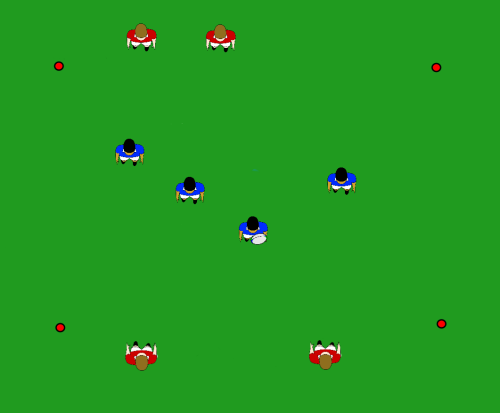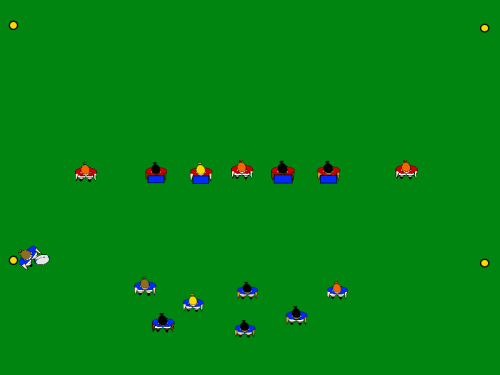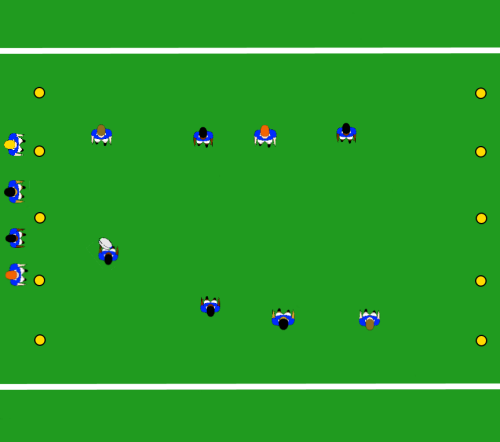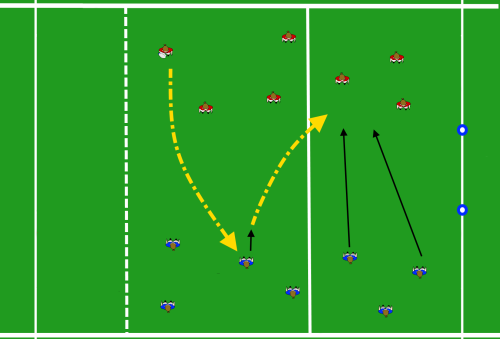This is the second post related to my quest to simplify what I do at training. If you didn’t see the first post, which has activities for attack, follow THIS LINK.
A re-cap of the areas for improvement and design principles …
Areas for Improvement:
- Athlete-Centred
- Their needs … requires assessment; ask them, but provide options (don’t know?)
- Their wants … open or from a list of choices
- Representative
- Percentage of action can be a guide.
- What do they really need now / for the future?
- MUST look and feel like the real game: starts, boundaries, numbers, variation, equipment, rules. Pressure, timing, realistic information vital to skill development.
- Repetition (without ‘repetition’)
- Balance between ‘getting reps in’ and providing randomized problem solving
- Activities: static, transition, multi, broken
- Constraints-led
- Providing opportunities to explore, discover, adapt/adopt
- Constraints are NOT limitations but invitations
- Challenge Point
- Finding optimal ‘learning zone’ (40-60% success?)
- May need differentiated activities to meet needs of all
- Self-Determination, Discovery
- Discovery is most impactful and robust form of learning
- Focus on outcomes. Guide more than instruct. There are ‘wrong’ ways, but there are many ‘right’ ways. Clear objectives will keep them focused. Give time and trust them.
- Question more than tell; questions should not be a guessing game or a regurgitation of cliches; consider Bloom’s taxonomy and don’t be afraid to leave for later
- Mark Bennett’s “Rule of 3” (individual, peers, coach)
- James Gee / Amy Price … missions; challenge, clue, cheat, change
- Early or mid-activity debriefs (teachable moments) more impactful than after-action
1 v 1
Procedure:
- Attacker and defender stand face-to-face, retreat to own line and come forward
- Attacker is passed ball, tries to evade
- Defender comes forward, tracks, wraps safe and strong; aims to drive back or out
- If defender cannot, can still ‘win’ by wrapping from behind and pulling back
Adaptations:
- Closer = more contact
- Wider = evasion
- Full Contact = incl. supporters to jackal and ruck
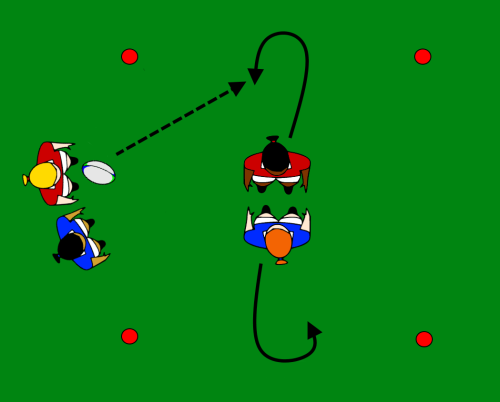
1 (+?) v 4 Unit Defence
Procedure:
- 4 defenders and same/fewer attackers start on opposite lines
- Coach/extra player passes ball to one attacker, and defence comes forward; supporting attackers do a down-up before moving to support
- Defenders aim to take away space, make a tackle, and win the ball back
Adaptations:
- Narrower channel for forwards
- Wider channel for backs
- If focus is more on defensive pressure and coordination, can remove full contact and go wrap = down
- Can join two together, playing the ball from one group to the next group

Multi-Directional Unit Defence
Procedure:
- Three defenders start in the middle of a large playing area (cone in the middle is their rallying point)
- Attacking teams on the sides take turns trying to score a try on the other side
- They must announce themselves before moving forward and must wait until the defending team has returned to the rallying cone in the middle
- Defenders can stay in for a set number of attacks or aim to hold off a target number
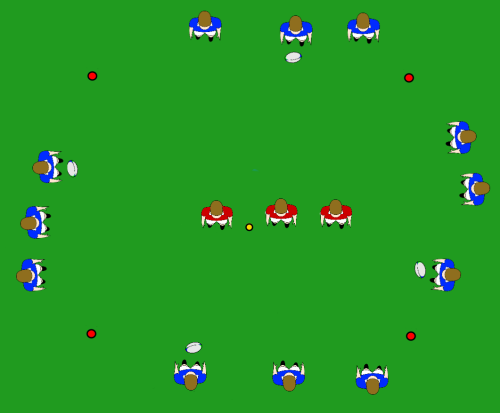
Defensive Pressure Game
Procedure:
- Evenly-matched attackers and defenders face off in a large playing area
- Attackers start with a tap at centre and have 10 phases to score; the value of the try decreases by one point every phase, starting with 10 points from the onset
- Defenders touch/wrap to not just stop them, but win points for themselves:
- ball carrier caught behind gainline (1pt)
- pressure or create turnover (knock-on, thrown forward, into touch, intercepted – 5pts)
- try scored (intercept, turnover recovered and scored without being caught – 10 pts)
- When caught, ball carrier goes to ground and offside line becomes length of their body; defenders can move forward on play of the ball
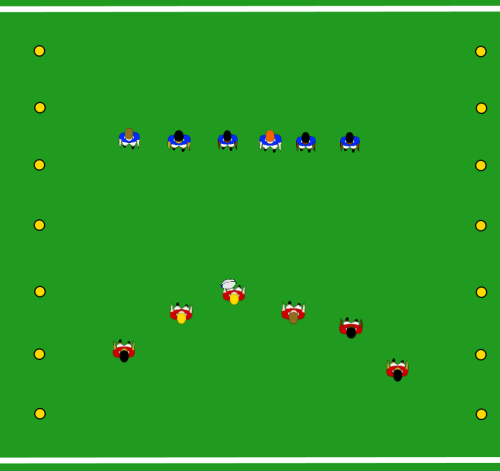
Whole Team Game:
See: Limited Phase Ruck Game in the attacking activities section … can provide various objectives and/or points as per the Defensive Pressure Game above.
